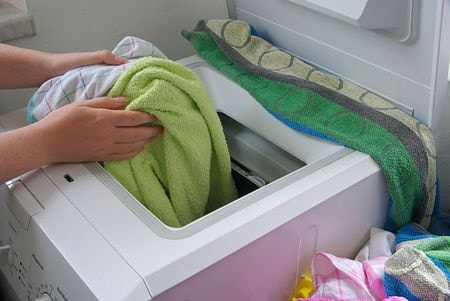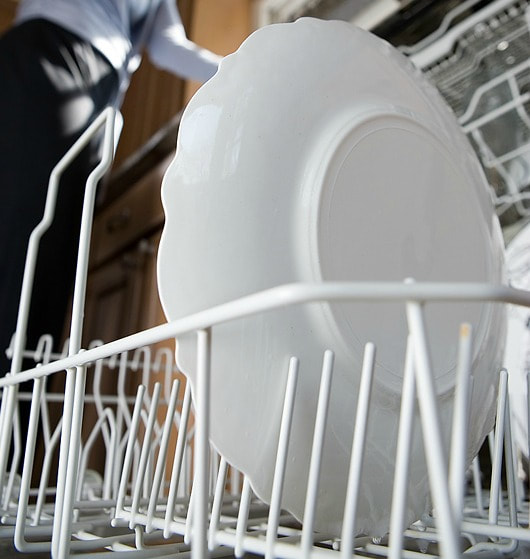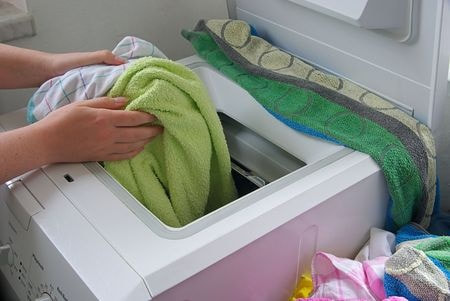|
Pauline writes "I am now on a single disability pension and have no money left after his cremation etc. After I pay my bills I'm left with approximately $100 per fortnight for food. I do the majority of my shopping at Aldi, but I'm finding it hard to work out a meal plan to get me through. I don't have a computer and really don't know where to begin. I was hoping for your help. OK folks, here's your chance to help a new member. If you have some advice for Julia, or a suggestion about what you love most about Cheapskates, share it below. Then keep an eye open, you may see your answer in next week's newsletter.
4 Comments
Julia writes
"I've just joined Cheapskates (in November), so am relatively new and loving every minute. I'm a little overwhelmed at all the information and struggling to really start. My DH and I have set goals to clear our CC debt this year and to increase our mortgage payment by $120 a week (an extra $6,240 paid off this year!) and on paper we should be able to do it, but our money just seems to disappear - hence joining (we need the inspiration and the motivation). Do you have any suggestions to new members where to start? For example, I have the forum always open, joined the Saving Revolution and bookmarked Tip Store pages so I can refer back to them. Does anyone have any other suggestions we can use to reach our goals this year? What do other members do to get the best out of Cheapskates?" Do you have the answer? If you have a suggestion or advice for Julia, let us know. We'll enter your answer into our Tip of the Week competition, with a one-year membership to the Cheapskates Club as the prize too. Today I'm going to go over how to clean my next favourite household appliance - the washing machine.
I wash every day except Saturday. Some days I do two loads a day to get bedding and towels clean, or those extra stinky sports clothes or like yesterday Wayne's super filthy, mud stained clothes from our day out on Sunday (he was on his back under a friend's four wheel drive a couple of times - and in a good shirt too!). My washing machine gets a good workout, but it is a newer HE machine and frankly I really do long for my old Hoover. It didn't need to be babied and coddled like this one does. A once-a-month clean kept it going for almost 30 years. My new machine needs to be cleaned regularly, it tells me when it needs to be done, and the process takes three hours and uses three loads of hot water. There is an easier, cheaper and much more energy efficient way to keep your washing machine clean and in tip top shape, and it works. It's the method I've been using for 26 years. First thing you need to do is find out if your washing machine actually has a lint filter. My HE machine doesn't, check your handbook to find out if your machine has a lint filter. If your washing machine is a top loader it should have a lint filter in the agitator. Pull out the top of the agitator and it should have some kind of little bag or basket attached to it. Gently take it off and give it a good clean. You may need to empty the lint out of it first. Then rinse it under hot water. If you use fabric softener then you will also need to soak it for a few minutes in white vinegar. Fabric softeners leave a film over the mesh that actually stops the water from getting through. You need to get rid of this build up. Front loaders have different lint filters - check your handbook to find out where it is and how to get to it. If you empty and rinse the lint filter after every wash you'll stop those black flakes of gunk that sometimes appear on your washing - that's the old muck out of the lint filter flowing back up into the bowl. Yuk! While the lint filter is soaking, get a cloth and a bucket of warm water and add a splash of vinegar (about 1 cup). Use this to wipe around the top of the bowl, under the lid, over the outside of the cabinet etc. Don't forget the inside of the agitator and the fabric softener dispenser. If it's particularly grungy, sprinkle with bi-carb and use this as a scouring powder. Just watch your fingers - the edges of all those ridges and rims can be sharp (guess how I know!). Put the lint filter back together and replace the top of the agitator. Then run your washing machine through a full cycle on the longest and hottest wash cycle (this is the only time I use a hot wash) and add a full 2 litre bottle of vinegar to it. Don't add any clothes or other detergents; let the vinegar work its magic. The vinegar will remove the scum and gunk and any hard-water build up in the bowl and hoses. Wipe over the outside of the machine with a damp cloth and dry. You washing machine will sparkle inside and out. Do this on a regular basis and you'll extend the life of your machine and save on costly maintenance calls. My handbook suggests every 100 washes, for me that's about every two months because of the amount of washing I do. For my mother it's every six months or so as she only does two loads a week. If your family is larger you may need to do this more often. It may seem like a tedious chore but it is worth taking care of this most useful household appliance. Think about what you'd do if you couldn't use your washing machine for a week - hand-washing, paying for the laundromat -and you'll see the benefit quickly. Step 1. Place a dishwasher-safe cup filled with plain white vinegar on the top rack of your empty dishwasher. The vinegar will help to wash away the loose, greasy grime, sanitizes, and helps remove the musty odour.
Step 2. Sprinkle a cup of bicarbonate soda around the bottom of the dishwasher. The bicarbonate soda will help freshen the smell of the dishwasher as well as brighten up the look of the inside of your appliance by removing stains. Step 3. Using the hottest water available, run the dishwasher through a cycle – except for the cup of vinegar, the dishwasher needs to be empty. Now that the dishwasher is clean and running right here are a few tips to keep it that way until the next cleaning. Run a bit of hot water in your sink before running the dishwasher. You will get cleaner dishes if the water starts hot. You can collect the water you run and use it to fill the kettle or for watering plants or other purposes. Run the water until what comes out of the tap feels hot. Make sure your water starts hot enough. Set the thermostat on your hot water service to 50 degrees Celsius. Water that is cooler than this won’t be hot enough to clean properly and water that is any hotter could scald. A routine dishwasher cleaning is a good habit to get into. Mark it on the calendar to do regularly each month, the same day you do the drains and the washing machine. Today I'm going to go over how to clean my next favourite household appliance - the washing machine.
I wash every day except Saturday. Some days I do two loads a day to get bedding and towels clean, or those extra stinky sports clothes or like yesterday Wayne's super filthy, mud stained clothes from our day out on Sunday (he was on his back under a friend's four wheel drive a couple of times - and in a good shirt too!). My washing machine gets a good workout, but it is a newer HE machine and frankly I really do long for my old Hoover. It didn't need to be babied and coddled like this one does. A once-a-month clean kept it going for almost 30 years. My new machine needs to be cleaned regularly, it tells me when it needs to be done, and the process takes three hours and uses three loads of hot water. There is an easier, cheaper and much more energy efficient way to keep your washing machine clean and in tip top shape, and it works. It's the method I've been using for 26 years. First thing you need to do is find out if your washing machine actually has a lint filter. My HE machine doesn't, check your handbook to find out if your machine has a lint filter. If your washing machine is a top loader it should have a lint filter in the agitator. Pull out the top of the agitator and it should have some kind of little bag or basket attached to it. Gently take it off and give it a good clean. You may need to empty the lint out of it first. Then rinse it under hot water. If you use fabric softener then you will also need to soak it for a few minutes in white vinegar. Fabric softeners leave a film over the mesh that actually stops the water from getting through. You need to get rid of this build up. Front loaders have different lint filters - check your handbook to find out where it is and how to get to it. If you empty and rinse the lint filter after every wash you'll stop those black flakes of gunk that sometimes appear on your washing - that's the old muck out of the lint filter flowing back up into the bowl. Yuk! While the lint filter is soaking, get a cloth and a bucket of warm water and add a splash of vinegar (about 1 cup). Use this to wipe around the top of the bowl, under the lid, over the outside of the cabinet etc. Don't forget the inside of the agitator and the fabric softener dispenser. If it's particularly grungy, sprinkle with bi-carb and use this as a scouring powder. Just watch your fingers - the edges of all those ridges and rims can be sharp (guess how I know!). Put the lint filter back together and replace the top of the agitator. Then run your washing machine through a full cycle on the longest and hottest wash cycle (this is the only time I use a hot wash) and add a full 2 litre bottle of vinegar to it. Don't add any clothes or other detergents; let the vinegar work its magic. The vinegar will remove the scum and gunk and any hard-water build up in the bowl and hoses. Wipe over the outside of the machine with a damp cloth and dry. You washing machine will sparkle inside and out. Do this on a regular basis and you'll extend the life of your machine and save on costly maintenance calls. My handbook suggests every 100 washes, for me that's about every two months because of the amount of washing I do. For my mother it's every six months or so as she only does two loads a week. If your family is larger you may need to do this more often. It may seem like a tedious chore but it is worth taking care of this most useful household appliance. Think about what you'd do if you couldn't use your washing machine for a week - hand-washing, paying for the laundromat -and you'll see the benefit quickly. |
Archives
April 2020
Categories
All
|



 RSS Feed
RSS Feed